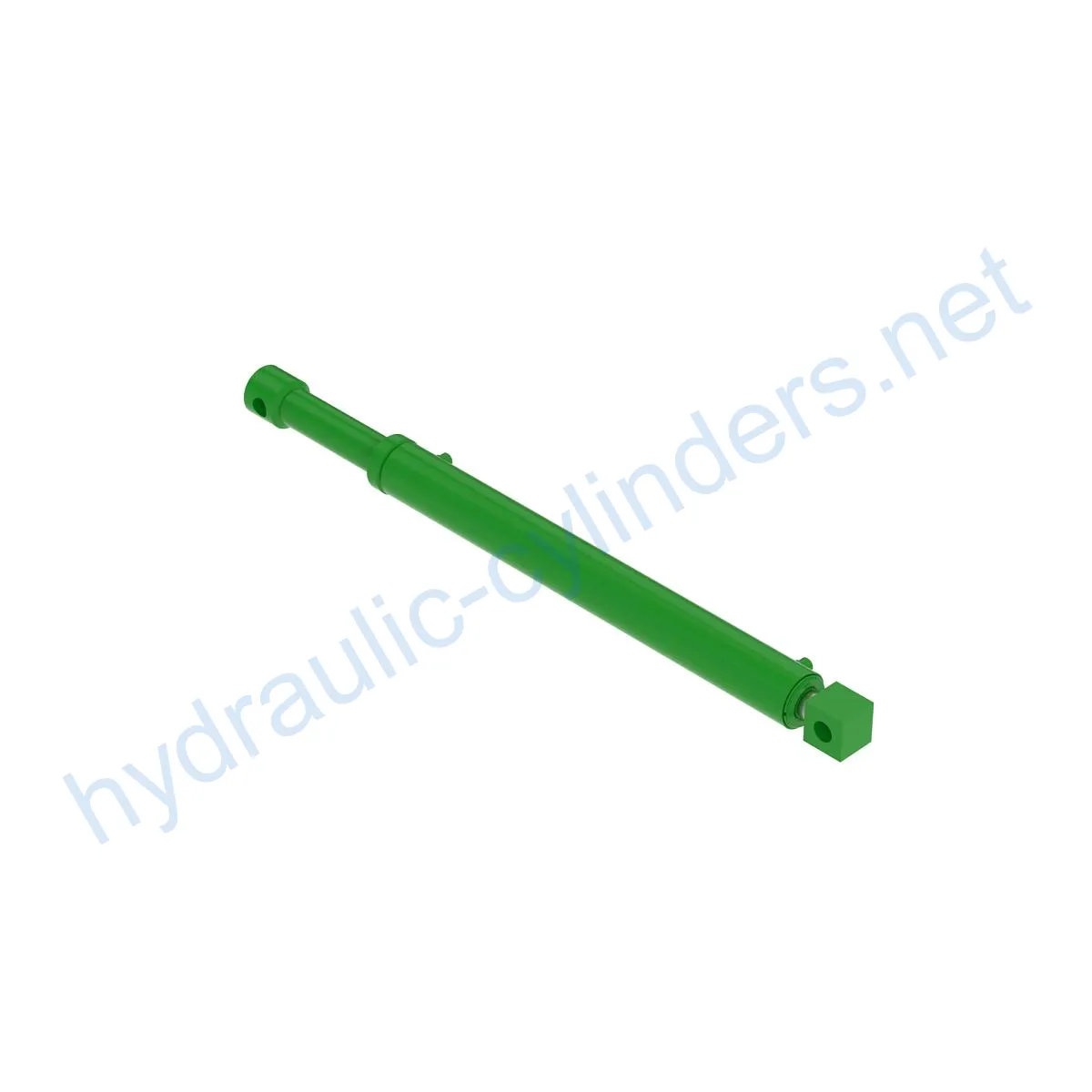Replacement Of AHC15603 Bucket Hydraulic Cylinder
Üheks hüdrosilindrite tootjaks, tarnijaks ja mehaaniliste toodete eksportijaks pakume hüdrosilindreid ja paljusid teisi tooteid.
Palun võtke meiega ühendust üksikasjade saamiseks.
Post:sales@hydraulic-cylinders.net
Tootja tarnija eksportija hüdrosilindrid.
Replacement Of AHC15603 Bucket Hydraulic Cylinder
Product Introduction
The Replacement Of AHC15603 Bucket Hydraulic Cylinder is a hydraulic component used in various heavy machinery. Its purpose is to provide the necessary force for the bucket’s movement, allowing efficient operation in applications such as excavators, cranes, tractors, harvesters, automated production lines, and more.
Specifications and Models
Weight: 51.59 lb
Height: 4.5 in
Width: 5 in
Length: 46 in
Product Features
- Improved Equipment Performance: Replacing damaged or worn hydraulic cylinders can restore the normal operation of equipment, ensuring optimal performance in various applications.
- Enhanced Safety: Regularly replacing hydraulic cylinders reduces safety risks associated with cylinder failures, ensuring the well-being of operators and equipment.
- Overload Protection: New cylinder designs often incorporate better overload protection mechanisms, enhancing overall safety.
- Quick Installation: Modern hydraulic cylinders are designed for easy installation and replacement, minimizing downtime.
- Standardized Components: Many hydraulic cylinders are standardized, making it easier to obtain replacement parts in the market.
Applications
- Excavators: Hydraulic cylinders in excavator arms or buckets may require replacement due to prolonged use or overload, restoring normal operation.
- Cranes: Hydraulic cylinders in crane booms are prone to wear during frequent lifting and lowering processes, necessitating regular replacement for safety reasons.
- Tractors: Front-end loader hydraulic cylinders in tractors can develop leaks or performance issues due to continuous lifting and tilting operations, requiring replacement.
- Harvesters: Hydraulic cylinders in harvesters’ hydraulic systems endure high pressure and may become damaged due to fatigue, necessitating timely replacement to maintain efficiency.
- Automated Production Lines: Hydraulic cylinders are used to control robotic arms and other automated equipment. Cylinder failures can significantly impact production efficiency and should be promptly replaced.
- Die Casting Machines: In high-pressure and high-temperature environments, hydraulic cylinders in die casting machines may experience performance degradation. Regular replacement ensures product quality.
- Mining Equipment: Hydraulic cylinders in mining equipment are responsible for lifting and moving heavy loads. Regular inspection and replacement are necessary to avoid equipment failure in harsh working conditions.
- Bulldozers: Worn hydraulic cylinders in bulldozer blades can lead to decreased pushing capabilities. Timely replacement is essential for maintaining operational efficiency.
Maintenance Tasks
- Regular Inspection: Periodically inspect the hydraulic cylinder for any signs of wear, leakage, or damage.
- Proper Lubrication: Ensure adequate lubrication of the cylinder to prevent friction and optimize performance.
- Seal Replacement and Calibration Check: Replace worn seals and periodically check the calibration of the cylinder to maintain its effectiveness.
Safety Considerations and Environmental Factors
When using hydraulic cylinders, it is crucial to prioritize safety measures. Proper installation, regular maintenance, and appropriate use of safety equipment are essential for ensuring a secure working environment. Environmental factors, such as temperature and humidity, should also be taken into account to minimize potential risks.
Troubleshooting and Common Issues
Issue 1: Cylinder not extending or retracting properly.
Solution: Check for any leaks, damaged seals, or blockages in the hydraulic system. Replace faulty components as necessary.
Issue 2: Excessive noise or vibrations during cylinder operation.
Solution: Inspect for loose connections, damaged mounting brackets, or misalignment. Tighten or replace components accordingly.
Issue 3: Slow or jerky cylinder movement.
Solution: Check the hydraulic fluid level and quality. Replace or refill as needed. Inspect for any obstructions or mechanical issues.
Preventive Measures
To minimize potential problems, it is recommended to perform regular maintenance, including inspections, lubrication, and seal replacements. Adhering to correct installation procedures, aligning the cylinder accurately, and using appropriate installation brackets can greatly extend the lifespan of the hydraulic cylinder. Additionally, providing information on replacement parts and rebuild services can help users effectively maintain and optimize the cylinder’s performance.

Product Design Considerations and Selection Criteria
When designing and selecting hydraulic cylinders, several factors should be considered:
- Load-bearing Capacity: The cylinder should be capable of handling the required load without compromising safety or performance.
- Sealing Capability: Effective sealing mechanisms, such as piston seals and rod seals made from durable materials like polyurethane or nitrile rubber, ensure optimal performance and longevity.
- Durability: Cylinders should withstand the demands of the application, including resistance to wear and corrosion.
- Safety: Design features that enhance safety, such as overload protection mechanisms, can minimize potential risks during operation.
- Maintainability: Consider ease of maintenance, availability of replacement parts, and rebuild services to ensure optimal usage lifespan.
Sealing and Lubrication
Hydraulic cylinders incorporate various sealing components, including piston seals, rod seals, and wipers. These seals are typically made from wear-resistant materials like polyurethane and nitrile rubber. The cylinder body and threaded ends undergo precise surface treatments to enhance wear resistance. Regular lubrication with the appropriate hydraulic oil is essential for ensuring smooth operation and extending the cylinder’s lifespan.
Regular Inspection and Preventive Maintenance
- Regular Inspection: Perform routine inspections to identify any potential issues, such as leaks, damaged seals, or misalignment.
- Proper Lubrication and Adjustment: Ensure the cylinder is adequately lubricated, and make any necessary adjustments to optimize performance.
- Correct Installation: Provide proper guidance on aligning
Tehke ekskursioon meie VR-tehases:
Tehke ekskursioon meie VR-tehases koos järgmisega
Hüdrosilindri kasutamine:


